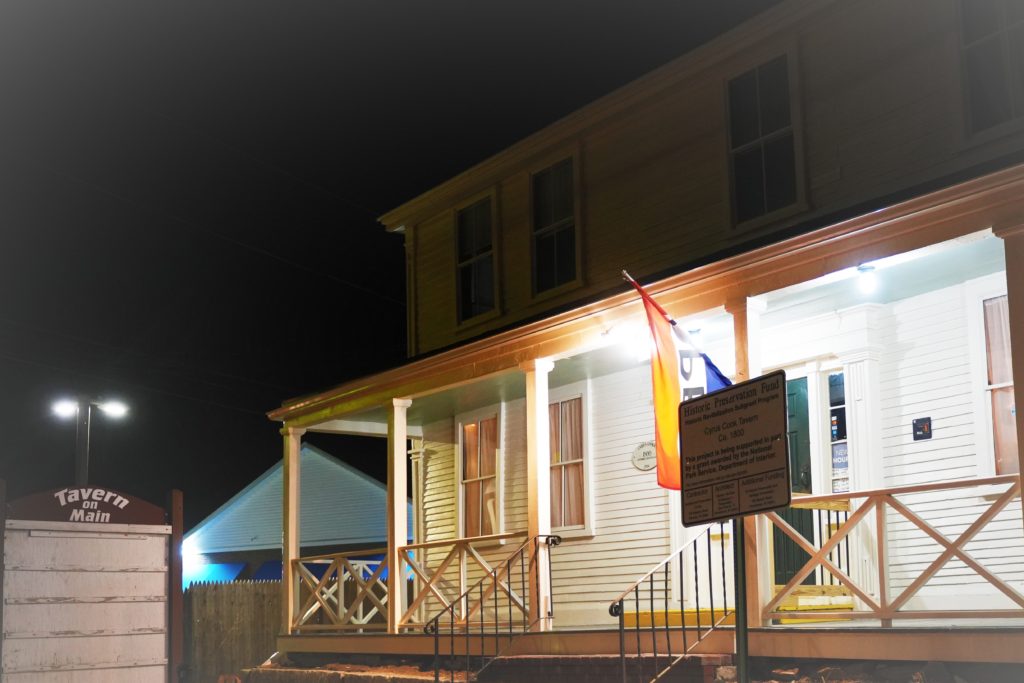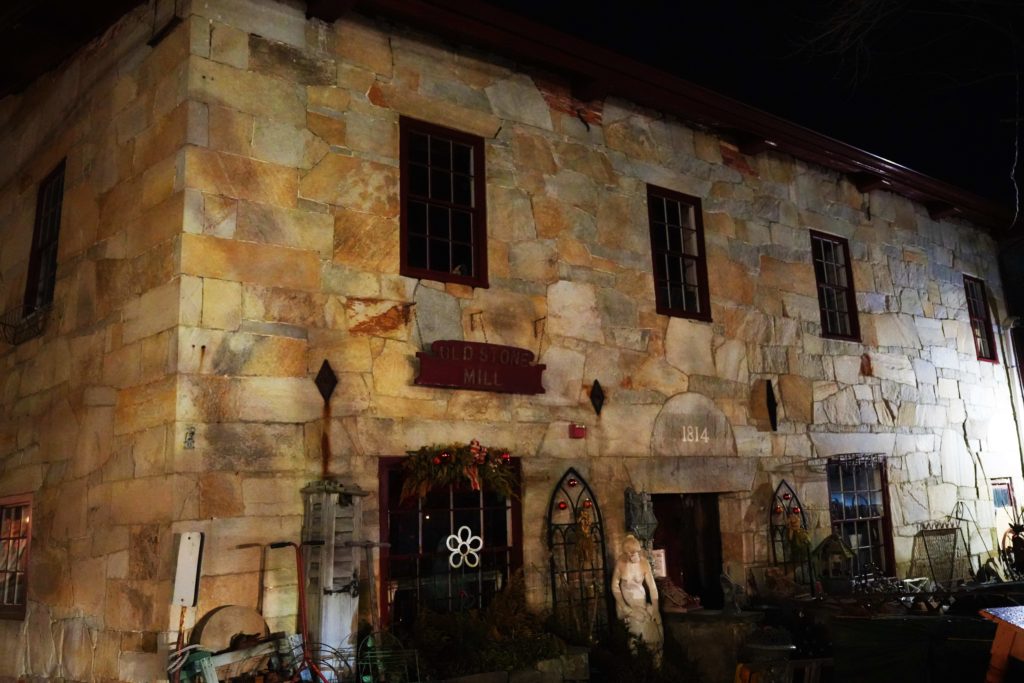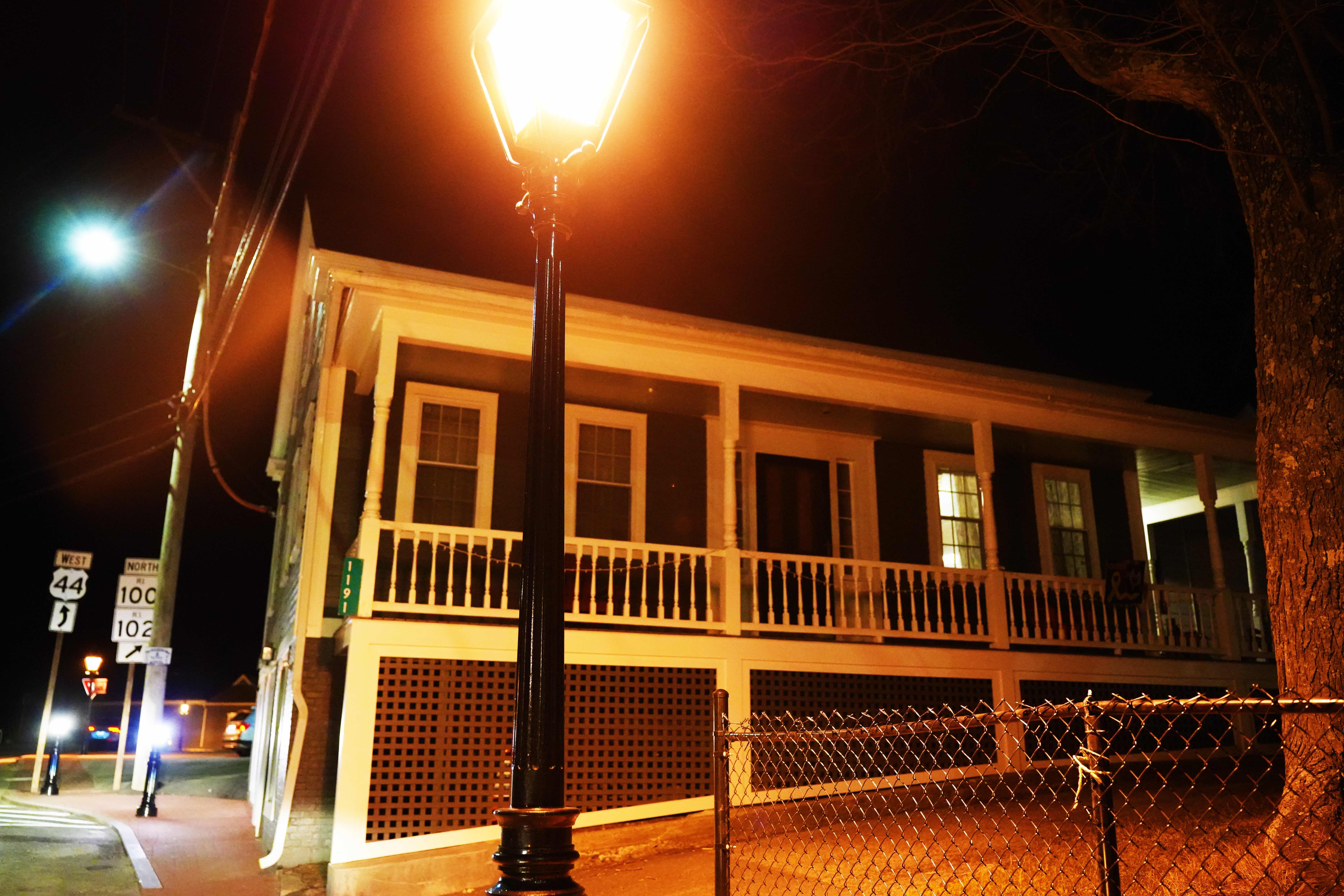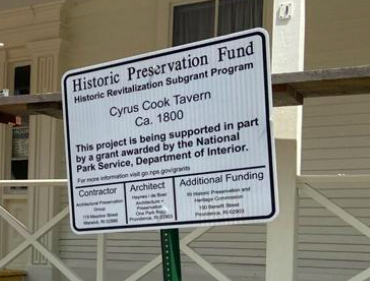GLOCESTER – People are preserving the past in Glocester with more than a little help from forces both in and outside of the town.
In Chepachet on Main Street is one example, where historic restoration projects are in various stages, including at the buildings once known as Cyrus Cook Tavern, Owen Lawton Mill, and Jeremiah Sheldon Tavern. In the 19th Century when those structures were built, the townspeople maintained property, and today, the National Park Service also has input in preservation efforts.
The NPS does more than just watch over wilderness at Yellowstone or Yosemite. This agency of the United States federal government within the Department of the Interior is intricately involved in the preservation of Glocester.
In fact, “Glocester was one of only nine applicants, from Alaska to West Virginia, to receive a 2019 award from the $5 million program,” explained Town Planner Karen Scott.
“The National Park Service announced a $250,000 grant to the town of Glocester from the Historic Revitalization Subgrant Program to launch a subgrant program targeted for the village of Chepachet,” said Scott.
The HRSP was created in 2018 to support the preservation of historic buildings in rural communities across the country, according to Scott.
Town planning in the past was exclusively local, perhaps looking like the famous 1943 Norman Rockwell painting titled “Town Meeting.” Today, there’s still town meetings, and there are grants and subgrants.
“This subgrant program is a key component to an overall sustainable strategy that the town is committed to implementing to turn Chepachet Village into a showcase of historic preservation and rural economic development,” said Scott. “The town also completed a Chepachet Village Revitalization Plan to identify opportunities for scattered site affordable housing paired with mixed use development, preserve historic resources, strengthen and expand small businesses, improve recreational resources, improve buildings and infrastructure, implement creative re-use of property, increase tourism and develop infill recommendations in December 2020.”
More information is available here.
On the National Register list since in 1971, the Chepachet Village Historic District is comprised of more than 100 buildings.

Scott provided details about the village: The town of Glocester developed the current local subgrant program guidelines and called for applicants. Three were awarded historic subgrants: Cyrus Cook Tavern, built in 1800 at 1157 Putnam Pike, $112,353; Owen Lawton Mill, built in 1814 at 1169 Putnam Pike, $66,715; and Jeremiah Sheldon Tavern, built in 1800 at 1191 Putnam Pike, $50,926.
The NPS is part of planning, as is the Glocester Town Council.
Haynes/de Boer Associates Architecture and Preservation, of Providence, has a contract with Glocester through the Town Council.
Architect and principal Cornelius de Boer said the work in Chepachet must meet NPS and other guidelines, such as approval by the Rhode Island Historical Preservation & Heritage Commission, a state agency.
“I’ve been visiting the mill for 50 years,” said de Boer about the Old Stone Mill, also known as Owen Lawton Mill.
He long wondered about the building he enjoys visiting.

He said the structure is, “on its last legs,” and so was considered, “top priority,” for funding for, “restoring the historic center of Chepachet.”
Re-pointing the stone walls is work for when the weather gets warmer. Meanwhile, some work is underway or done, such as ten windows that were, “totally inappropriate,” and were replaced, according to the expert.
de Boer researched the properties, including looking at images from the past to, “try to get a better feel what the buildings went through in their history,” he said.
For instance, for Cyrus Cook Tavern, now known as Tavern on Main, changes were based in part on old photos. Railings on the porch had been changed over time. And windows had to be replaced to fit the historic image, said de Boer.
Jeremiah Sheldon Tavern, a building that seems to stand guard at the rotary, was, “radically altered,” over time, according to de Boer. For example, originally it had a double set of stairs leading to the front door. Among other changes, 100 years ago, a porch was added, he said.
He noted that it’s now up to the owners of the properties to complete historic upgrade projects.
Thus far, work is completed on Jeremiah Sheldon, while work is nearing completion at the Cyrus Cook and the Owen Lawton Mill, according to Scott.
Chepachet isn’t the only area in Glocester of interest to planners, the NPS, or the United States government. A notice hasn’t gone out to property owners announcing the fact, but there’s been press, and there’s a website announcing that at least a portion of Glocester is within the the Blackstone River Valley National Heritage Corridor. Some of the lake areas, for example, are within the boundary of the corridor.
According to a report presented in June 2006, in Gerona, Spain, at the Business Enterprises for Sustainable Tourism Education Network Think Tank VI titled, “Stakeholder Involvement, Culture and Accountability in the Blackstone Valley of New England USA: A Work in Progress,” by Robert Billington, Veronica Cadoppi and Natalie Carter of the Sustainable Tourism Planning and Development Laboratory – Blackstone Valley Tourism Council Inc., “the US Congress recognized the national significance of the Blackstone Valley by establishing the Blackstone River Valley National Heritage Corridor Commission in 1986. This commission was designed to support, protect and celebrate the Birthplace of America’s Industrial Revolution. Likewise, President Clinton declared the Blackstone River an American Heritage River in 1998.”
A, “new kind of legislation in the United States,” “was instrumental in helping local leaders of the Blackstone Valley to facilitate preservation and protection of the lands along the banks of the river and to obtain resources to encourage economic development, while maintaining and enhancing the character of the Valley: its environment, culture, aesthetics, heritage, and the well-being of its residents,” according to the tourism council.
Twenty-four towns, including Glocester and others in Rhode Island, and towns in Masschusetts, “work together towards a common planning mechanism, with the technical support, and some financial assistance from the National Park Service. The US Department of Interior appointed a 19-person Commission to supervise and direct this partnership.”
Fast forward to December 22, 2022: the Blackstone River Valley National Heritage Corridor received a, “holiday present,” according to their press release, “with the full support of the Congressional delegations from Massachusetts and Rhode Island.”
The gift was the United States Congress legislation ensuring the existence of the Blackstone River Valley National Heritage Corridor – and many more across America – for the next decade and a half by passing the National Heritage Area Act.
In part, the bill reads: “Through administering the heritage areas of such system, the Department of the Interior may provide technical and financial assistance to local coordinating entities to support the establishment, development, and continuity of such areas.
This means the Department of the Interior, rather than the US Congress, is the, “go-to,” in government regarding the National Heritage Area System, including the BRVNHC.
Today is different than in Norman Rockwell’s era. When people want to preserve the past or their heritage, they may likely have town, state, and federal partners.










